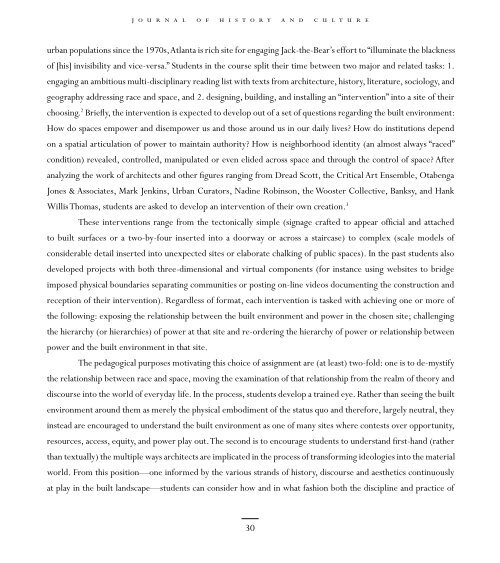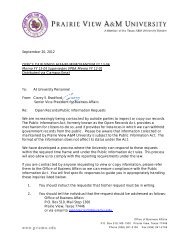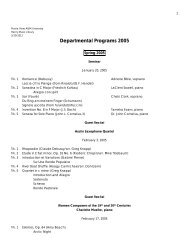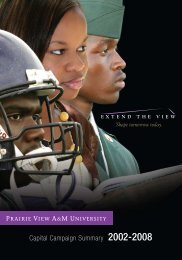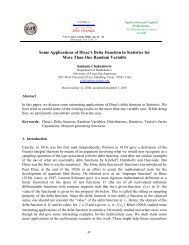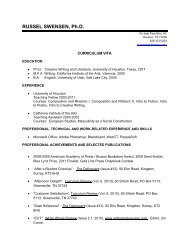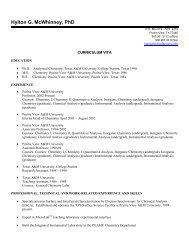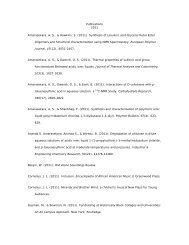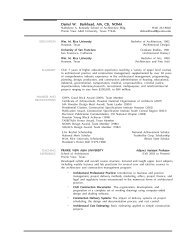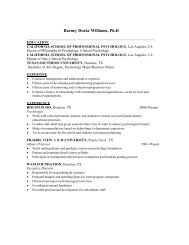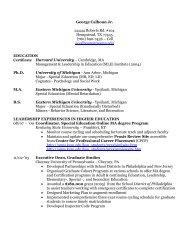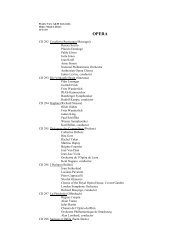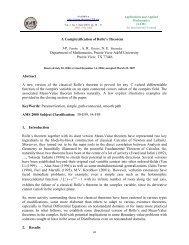Journal of History and Culture Journal of History and Culture
Journal of History and Culture Journal of History and Culture
Journal of History and Culture Journal of History and Culture
Create successful ePaper yourself
Turn your PDF publications into a flip-book with our unique Google optimized e-Paper software.
j o u r n a l o f h i s t o r y a n d c u l t u r e<br />
urban populations since the 1970s, Atlanta is rich site for engaging Jack-the-Bear’s effort to “illuminate the blackness<br />
<strong>of</strong> [his] invisibility <strong>and</strong> vice-versa.” Students in the course split their time between two major <strong>and</strong> related tasks: 1.<br />
engaging an ambitious multi-disciplinary reading list with texts from architecture, history, literature, sociology, <strong>and</strong><br />
geography addressing race <strong>and</strong> space, <strong>and</strong> 2. designing, building, <strong>and</strong> installing an “intervention” into a site <strong>of</strong> their<br />
choosing. 2 Briefly, the intervention is expected to develop out <strong>of</strong> a set <strong>of</strong> questions regarding the built environment:<br />
How do spaces empower <strong>and</strong> disempower us <strong>and</strong> those around us in our daily lives? How do institutions depend<br />
on a spatial articulation <strong>of</strong> power to maintain authority? How is neighborhood identity (an almost always “raced”<br />
condition) revealed, controlled, manipulated or even elided across space <strong>and</strong> through the control <strong>of</strong> space? After<br />
analyzing the work <strong>of</strong> architects <strong>and</strong> other figures ranging from Dread Scott, the Critical Art Ensemble, Otabenga<br />
Jones & Associates, Mark Jenkins, Urban Curators, Nadine Robinson, the Wooster Collective, Banksy, <strong>and</strong> Hank<br />
Willis Thomas, students are asked to develop an intervention <strong>of</strong> their own creation. 3<br />
These interventions range from the tectonically simple (signage crafted to appear <strong>of</strong>ficial <strong>and</strong> attached<br />
to built surfaces or a two-by-four inserted into a doorway or across a staircase) to complex (scale models <strong>of</strong><br />
considerable detail inserted into unexpected sites or elaborate chalking <strong>of</strong> public spaces). In the past students also<br />
developed projects with both three-dimensional <strong>and</strong> virtual components (for instance using websites to bridge<br />
imposed physical boundaries separating communities or posting on-line videos documenting the construction <strong>and</strong><br />
reception <strong>of</strong> their intervention). Regardless <strong>of</strong> format, each intervention is tasked with achieving one or more <strong>of</strong><br />
the following: exposing the relationship between the built environment <strong>and</strong> power in the chosen site; challenging<br />
the hierarchy (or hierarchies) <strong>of</strong> power at that site <strong>and</strong> re-ordering the hierarchy <strong>of</strong> power or relationship between<br />
power <strong>and</strong> the built environment in that site.<br />
The pedagogical purposes motivating this choice <strong>of</strong> assignment are (at least) two-fold: one is to de-mystify<br />
the relationship between race <strong>and</strong> space, moving the examination <strong>of</strong> that relationship from the realm <strong>of</strong> theory <strong>and</strong><br />
discourse into the world <strong>of</strong> everyday life. In the process, students develop a trained eye. Rather than seeing the built<br />
environment around them as merely the physical embodiment <strong>of</strong> the status quo <strong>and</strong> therefore, largely neutral, they<br />
instead are encouraged to underst<strong>and</strong> the built environment as one <strong>of</strong> many sites where contests over opportunity,<br />
resources, access, equity, <strong>and</strong> power play out. The second is to encourage students to underst<strong>and</strong> first-h<strong>and</strong> (rather<br />
than textually) the multiple ways architects are implicated in the process <strong>of</strong> transforming ideologies into the material<br />
world. From this position—one informed by the various str<strong>and</strong>s <strong>of</strong> history, discourse <strong>and</strong> aesthetics continuously<br />
at play in the built l<strong>and</strong>scape—students can consider how <strong>and</strong> in what fashion both the discipline <strong>and</strong> practice <strong>of</strong><br />
30


